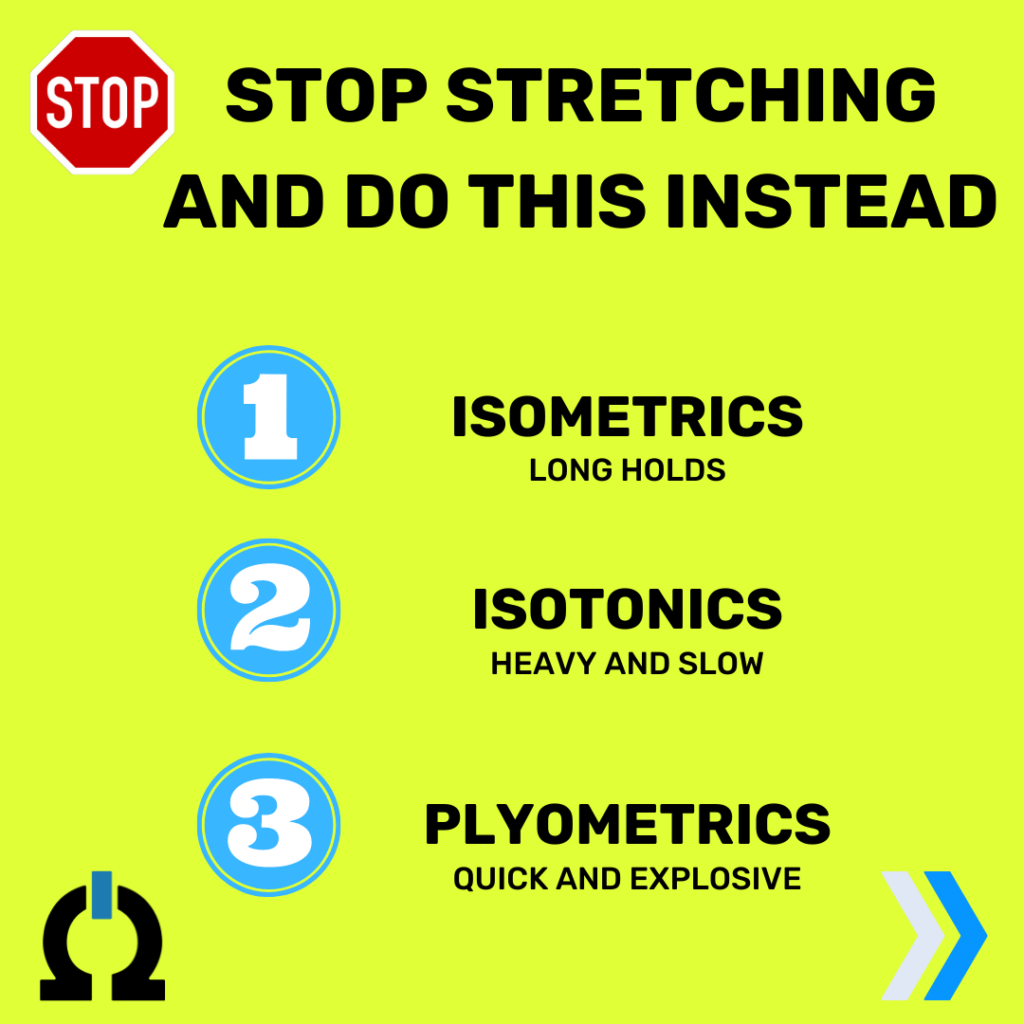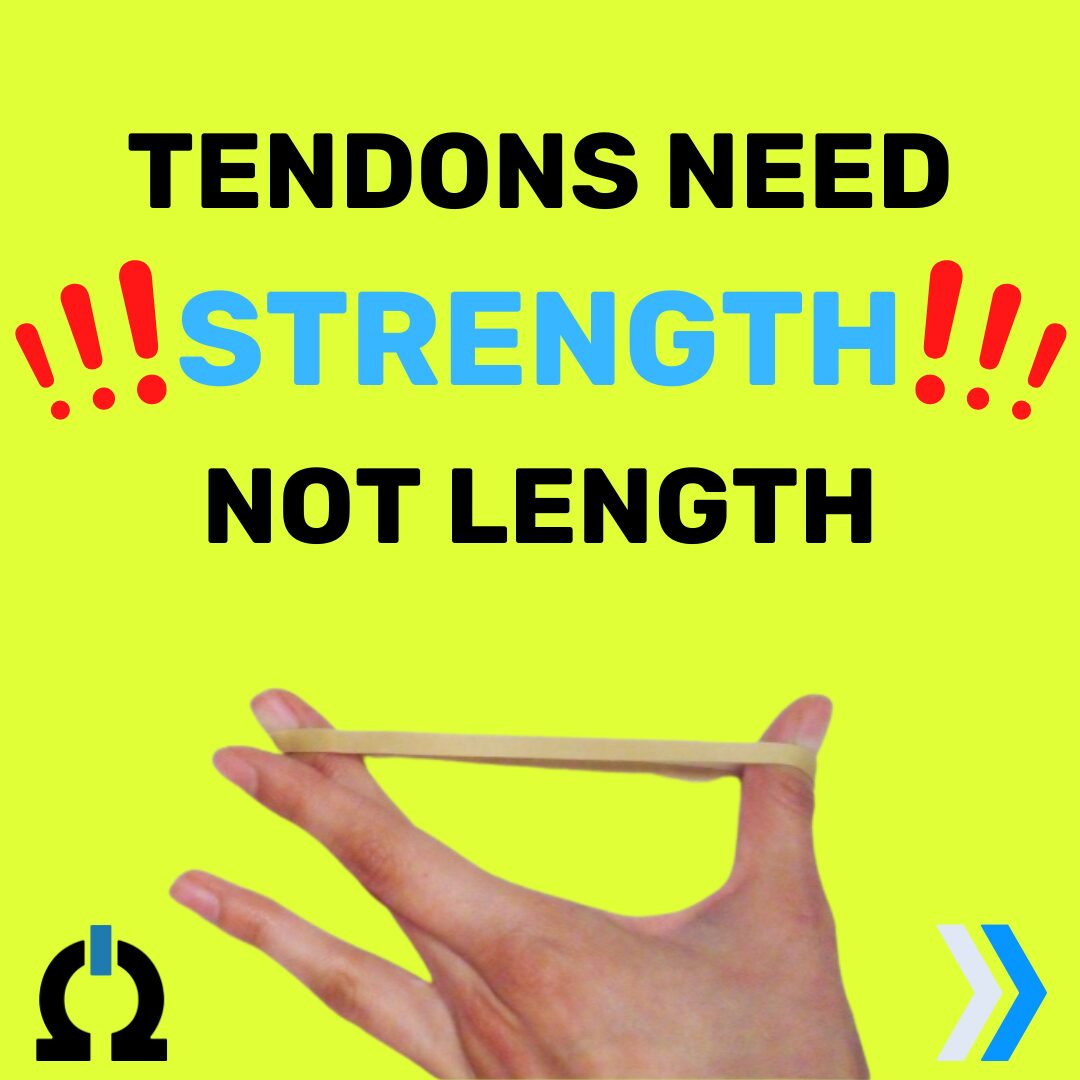There are many things you should be doing if you’re having tendon pain. Stretching is not one of them. Tendon health relies on its ability to store and return elastic energy. This is the tendon’s tensile strength. Think of a rubber band. If we pull the rubber band back and release it right away it will go a lot further than if we hold the rubber band before releasing it. Even worse, think of a dry-rotted rubber band. You can stretch it pretty far, but it’s not going to give you any energy in return.
If your tendons are giving you trouble, try this instead…
**We also recommend these exercises for aging athletes, as tensile strength is something we lose as we get older. This can result in the feeling of tightness and also affect performance.

Isometrics – Isometric exercises involve long holds (30-45 seconds, 5 reps, a few times a day). For Achilles tendonitis, try holding a single leg calf raise at mid-range. For patellar tendonitis, try holding a wall-sit. Think of isometric exercises as the replacement for Advil, which we now know isn’t very helpful for tendon injuries. Whenever you are feeling pain, do some isometrics. It can help reduce the pain and adds a healing stimulus to the tendon. Pain during the exercises of less than 5/10 is ok, but you should work with a professional to help you dose the exercises in this case.
Isotonics – This is when we start loading the tendon. Examples of isotonics are eccentric calf raises and squats on a decline (both pictured in the videos attached). You can start this exercise with body-weight, but we really want you to prepare your tendon for load by adding weight (and heavy!). For example, the soleus absorbs 6.5-8x your body weight when you run! Doing bodyweight soleus raises is not going to cut it. We also care about the tempo at which you perform these. Count for 3 on the way up and 6 on the way down. Once again, pain of less than 5/10 for these exercises is ok (again, work with a professional!).
Plyometrics – Now that you’ve worked through the last two steps, it’s time to teach the tendon how to store and release energy…and with some speed! This is where we add jumping, hopping, skipping, etc. For different injuries, there are different protocols on how to progress plyometrics. By this point, you’re often back to running or playing sports so it’s important to dose these appropriately; enough to progress but not so much that you end up hurt again.
Mobility – Ok, so what if you still feel tight and really want to stretch. There may be some things around the area that are tight. We recommend foam rolling the muscle that is attached to the tendon instead of stretching. There also may be a need to improve joint mobility or stability to help you feel like you can move better. A professional can guide you on what you need by doing a movement screen.

